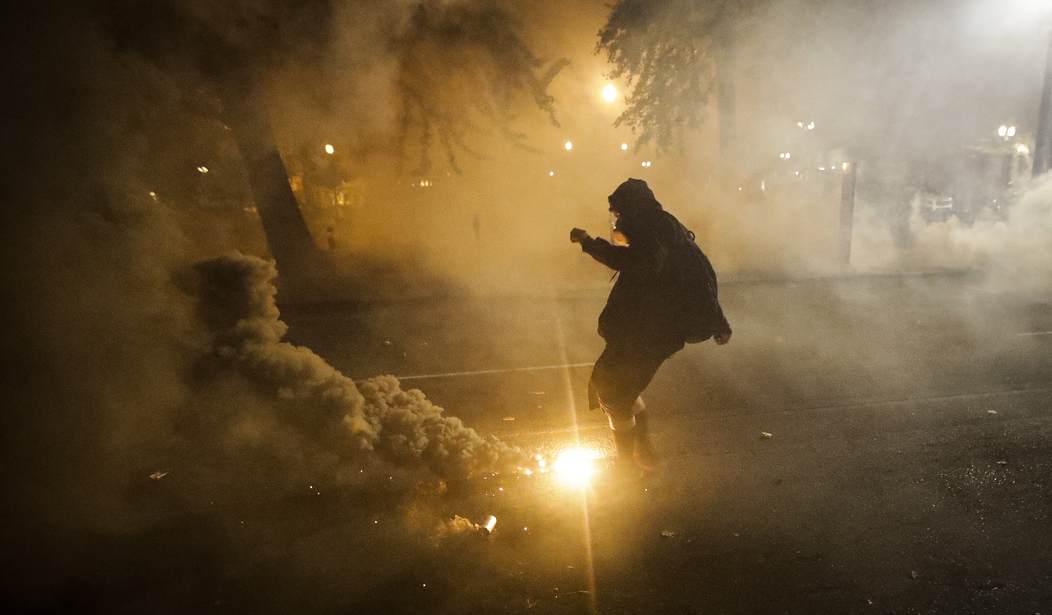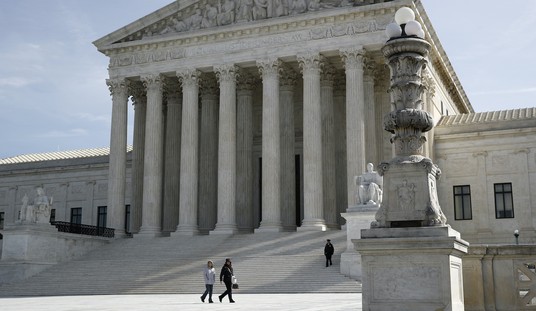Oregon officials announced they are conducting studies to see the environmental impact of tear gas to the city of Portland after months of rioting, AP reported.
The Portland Bureau of Environmental Services cleaned and took samples from six storm drains last week around the federal courthouse and a building with a police station and jail that have been targeted in nightly demonstrations.
Federal troops used the chemical agent to help disperse violent crowds in the city from Black Lives Matter protests. Those troops left earlier this month after reaching an agreement with city officials. Before their arrival, local authorities used the gas as well and are continuing to use the chemical, as the violent protests have not abated.
Demonstrators and city officials argued the use of tear gas was not necessary. However, law enforcement who were subjected to thrown objects like bricks, bottles, and fireworks, felt otherwise.
After almost 80 nights of rioting, environmentalists are looking to determine the damage done to the environment from the use of tear gas.
Officials are trying to determine whether or not the residue from the gas reached the Willamette River, which runs through downtown Portland and is a popular spot for kayakers, canoeists, and boaters. Around 2.5 million people live in the surrounding area of the waterway.
Diane Dulken, a spokesperson for the agency, said that there is no American city that she is aware of "that has endured the level of tear gas" Portland has.
Recommended
She also said that there is no evidence tear gas residue has impacted waterways, but acknowledged there's "so much unknown about the materials" it's hard to determine the effect.
U.S. Rep. Earl Blumenauer of Oregon and state Rep. Karin Power sent a letter in July to the U.S. Environmental Protection Agency and the Oregon Department of Environmental Quality seeking an investigation into the “the public health and environmental risks of tear gas and other chemicals to people, wildlife, aquatic life, and local air and water quality.”
Academics expressed their concerns over whether the surrounding Portland environment has been negatively affected by the frequent use of tear gas.
Robert P. Griffin, the dean of the College of Emergency Preparedness, Homeland Security, and Cyber Security, also expressed concern about the environmental impact of the crowd-controlling, non-lethal gasses.
"If you put a cloud of gas into a crowd, it's going to affect the old, it's going to affect the young, it's going to affect the youth. It doesn't pick," Griffin said. "The problem is, if the wind shifts, it will go into areas that it was never intended to go."
Sven-Eric Jordt, an associate professor, and researcher at Duke University said he believes more research should have been done earlier on to study how the chemicals impacted humans and nature. Jordt has studied tear gas in the past, publishing a 2016 co-authored study on the chemical agent's longterm effects on the human body.
"We should be putting money into understanding the long-term health and impacts of these technologies because they are being used on our own citizens," Griffin said.
There was no comment from the Portland Bureau of Environmental Services on whether they'd be studying the other environmental issues from the riots, like the effects of the fires or the amount of trash left behind by protesters.
So far, the protests in Portland have led to more than $20 million in damage, with 550 arrests.

























Join the conversation as a VIP Member